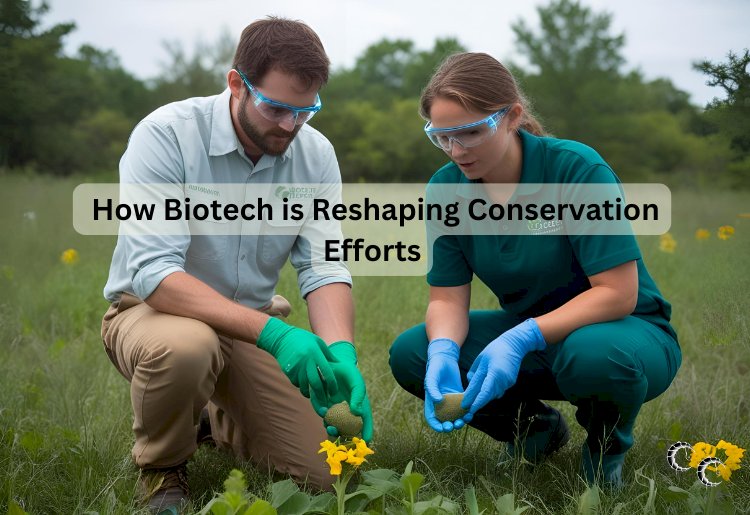How Biotech is Reshaping Conservation Efforts

Biotechnology is transforming conservation practices, offering innovative solutions to some of the most pressing environmental challenges. From preserving endangered species to restoring ecosystems, biotech is playing a critical role in shaping the future of our planet's biodiversity.
Preserving Endangered Species
Biotechnology is enabling scientists to combat extinction in groundbreaking ways.
Key Innovations
-
Genetic Rescue: Techniques like CRISPR gene editing are being used to enhance genetic diversity in populations, increasing their resilience to diseases and environmental changes.
-
Cloning: Cloning endangered animals, such as black-footed ferrets and Przewalski's horses, is helping to boost population numbers.
-
DNA Sequencing: Advanced sequencing helps identify genetic weaknesses in species, informing targeted conservation strategies.
Restoring Ecosystems
Biotech is aiding efforts to rehabilitate degraded habitats and ecosystems.
Techniques in Ecosystem Restoration
-
Bioengineered Plants: Genetically modified plants designed to tolerate harsh conditions can stabilize soil and support reforestation efforts.
-
Microbial Solutions: Engineered microorganisms are being deployed to break down pollutants and restore soil and water health.
-
Coral Reef Regeneration: Scientists are using bioengineering to create heat-resistant coral species, helping reefs survive climate change.
Combating Invasive Species
Biotechnology provides tools to manage invasive species that threaten native ecosystems.
Examples of Biotech in Action
-
Gene Drives: Engineered genes can suppress or reduce populations of invasive species like mosquitoes or rats, mitigating their impact on native wildlife.
-
Targeted Biocontrols: Precision biological agents can disrupt invasive species without harming non-target organisms.
Monitoring and Research
Biotech enhances our ability to track and study wildlife and ecosystems with unprecedented precision.
Monitoring Tools
-
Environmental DNA (eDNA): Scientists can analyze eDNA samples from water or soil to detect the presence of species without direct observation.
-
Biotelemetry: Implantable biotech devices track animal movements and health, offering insights into behavior and migration patterns.
-
Artificial Intelligence: AI-powered analysis of genetic data accelerates the identification of conservation priorities.
Tackling Climate Change
Biotechnology is central to addressing climate change's impact on biodiversity.
Climate-Smart Solutions
-
Carbon-Sequestering Crops: Genetically engineered plants that absorb and store more carbon dioxide can reduce greenhouse gas concentrations.
-
Synthetic Biology: Innovations like lab-grown meats and biofuels reduce the ecological footprint of human activities.
-
Ocean Fertilization: Biotech strategies are being explored to stimulate plankton growth, enhancing oceanic carbon capture.
Ethical and Practical Challenges
While the potential of biotechnology in conservation is immense, it also raises ethical and logistical questions.
Considerations for Biotech in Conservation
-
Unintended Consequences: Releasing engineered organisms into the wild carries risks, including ecological imbalance.
-
Equity and Access: Ensuring that biotech solutions are accessible to all regions, especially those most affected by biodiversity loss.
-
Ethical Boundaries: Defining acceptable limits for genetic manipulation in wildlife conservation.
In Conclusion
Biotechnology is revolutionizing conservation, offering hope in the fight against biodiversity loss and environmental degradation. As the field evolves, collaboration between scientists, policymakers, and communities will be essential to harness its full potential while addressing its challenges. With the right balance of innovation and care, biotech can be a powerful ally in preserving the natural world for generations to come.


























